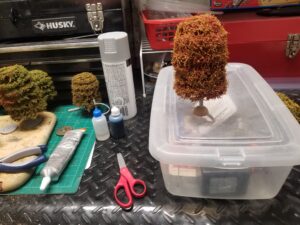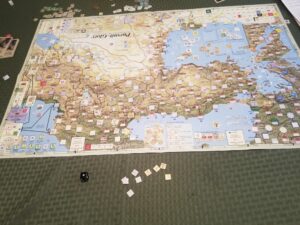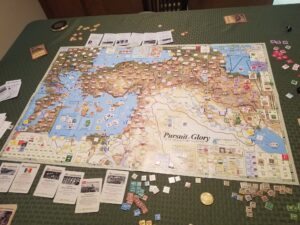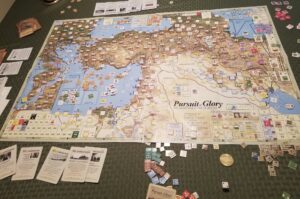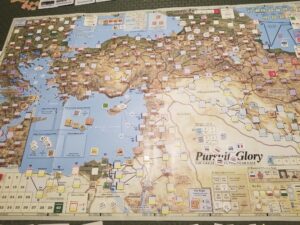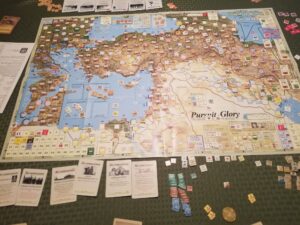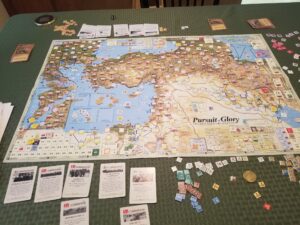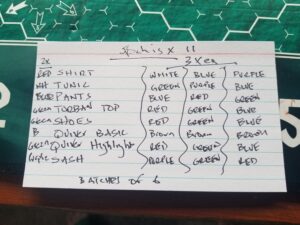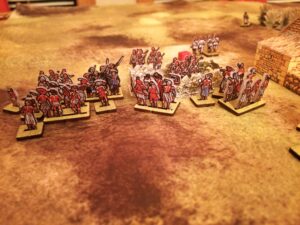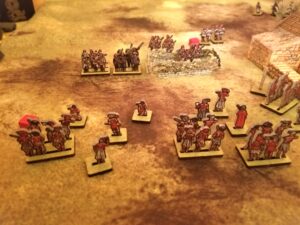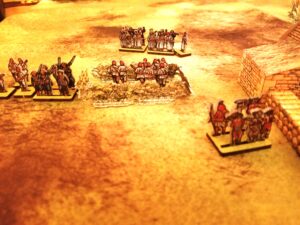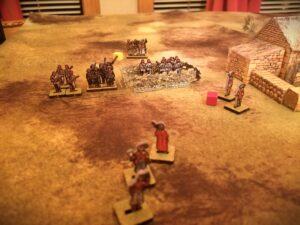It was a chicken and egg situation. Which came first, the decision to refurbish the old DBA table, or re-boot the Irregular Wars East African Renaissance Campaign?
Either way, after reading the rules, fixing up the 2×2 foot table with Home Depot plywood/ spray paint, and reviewing old posts, serious scenario development work is now underway. The Yes/No/Maybe dice have had quite a workout over the weekend, answering an endless number of questions scribbled on a yellow notepad.
Before two new characters are introduced, a quick review and update on this “inspired by true events” campaign last featured some three-plus years ago, having started way back in 2016.
Oh, and a map might be helpful. Don’t you just hate having to following a military narrative without (or with bad) maps.
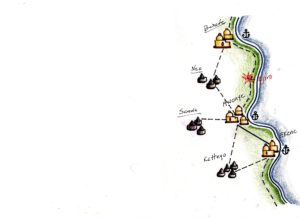
Couldn’t find the original, so this one – annotated with a battle site – will have to do. Gee, I’m a professional………bad map!
The ineffective Lord Renaldo has been recalled to Portugal to face the King and Bastinado. His replacement is General Einar Costa. General Costa was born in Brazil, and has fought in several campaigns. He is devout, experienced and inspiring. He is considered a “lucky” general. His staff includes a skilled physician and highly regarded master gunner.
Portuguese strategy has shifted from attempting to exploit the areas outside of Ekene to simply holding on to the port, using it as a stop-over for merchant ships traveling to/from the Indian Ocean. While government support is still relatively low, additional funds have been provided to provide for the city’s defense and improve the port’s facilities.
To the north lies Mwenye. This port city is ruled by Sultan Jabir Efe. He is an experienced ruler and leader, having controlled the city for as long as anyone can remember. His knowledge of the coastal region is second to none. A thriving port, the city is renowned for its doctors and hospitals. His armory is supervised by a formidable master gunner. The Sultan is pragmatic and keeps on good terms with all neighboring cities and villages.
Sultan Efe is using the small, but active, Chinese merchant community in an attempt to establish contact with the Chinese fleet cruising between Aden and Mogadishu. The local merchants have assured him that interaction will bring increased commerce and wealth. So far, his efforts have not been acknowledged.
Bey Iman Mahir continues to rule Behefe. He stills pays tribute to his mentor, Sultan Efe of Mweyne. Now an experienced leader, he has excellent regional knowledge. Relations between Behefe and the indigenous peoples of neighboring Neo are good. He has been ably aided in his campaigns defending the city by an outstanding physician.
Bey Mahir has also heard of the Chinese fleet. Not fully trusting Sultan Efe’s motives, Mahir has sent an envoy north to Somalia. He is to contact Ottoman leaders and inquire as to their interest in trading with Behefe and, perhaps, acting as allies against any threats.
After his surprising victory over the Portuguese, Oumar has emerged as leader of Kattego village. Deeply suspicious of outsiders, his people consider him an experienced and inspiring leader with a vast knowledge of the lands lying west of the coastal cities. They also believe he is blessed with good fortune. His success has not effected his humble manner nor aversion to flattery.
More is now known about the Mystic travelling in the region. He is Kibwe Nkruma, also called Abdal (The Servant) by Arabized Africans. He is a Diviner, from the West, and a disciple of Shango, Nigerian God of Fire and Lightning. He has a small, but devoted, group of followers. His current whereabouts is unknown.
Rumor has it the leader of the Chinese is Admiral Lei Qui. According to Mweyne’s merchants, his reputation is as an inspiring and experienced leader, with strong Buddhist beliefs. An excellent judge of character, his staff includes an experienced surgeon as well as a highly competent quartermaster.
The region has been relatively tranquil.


